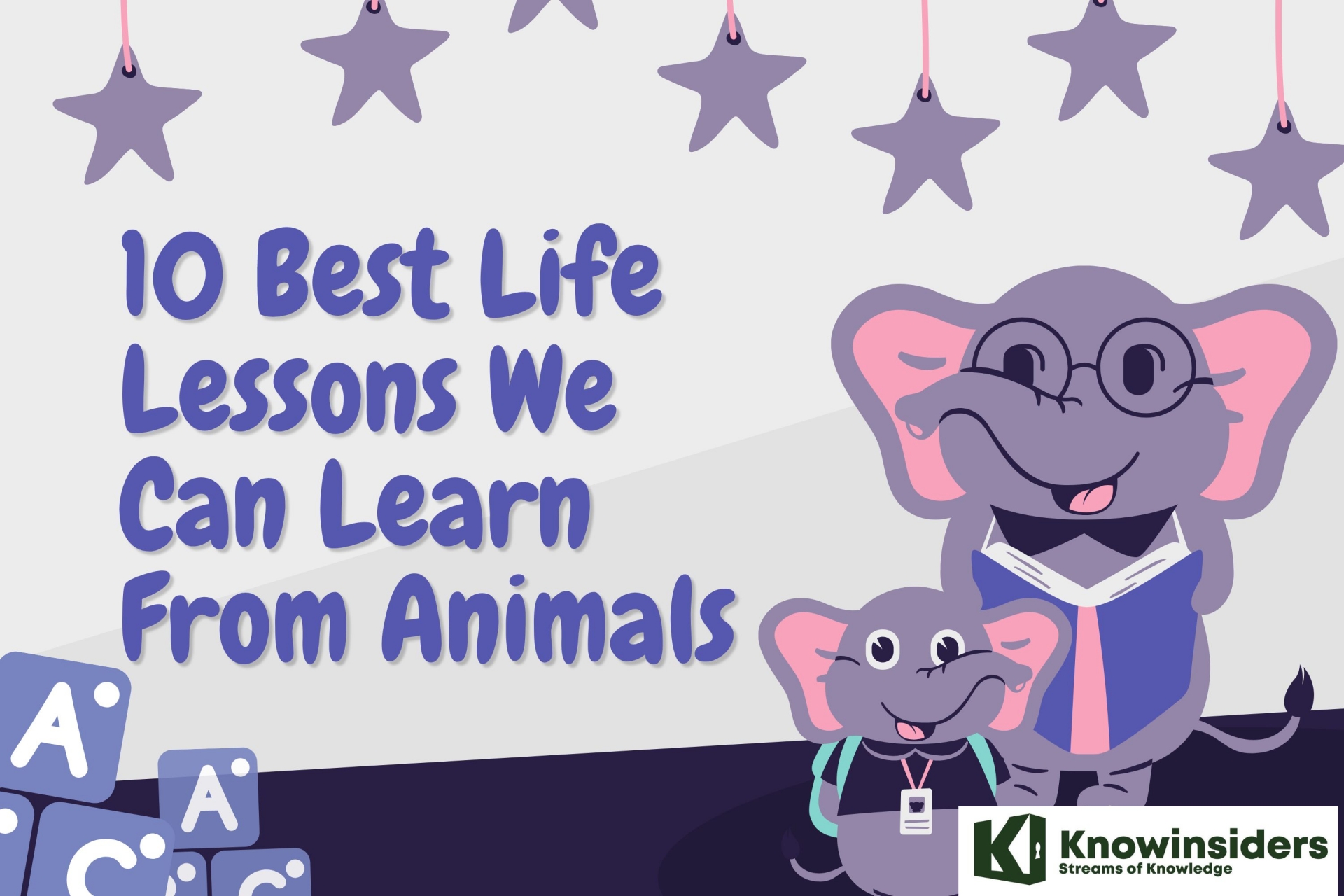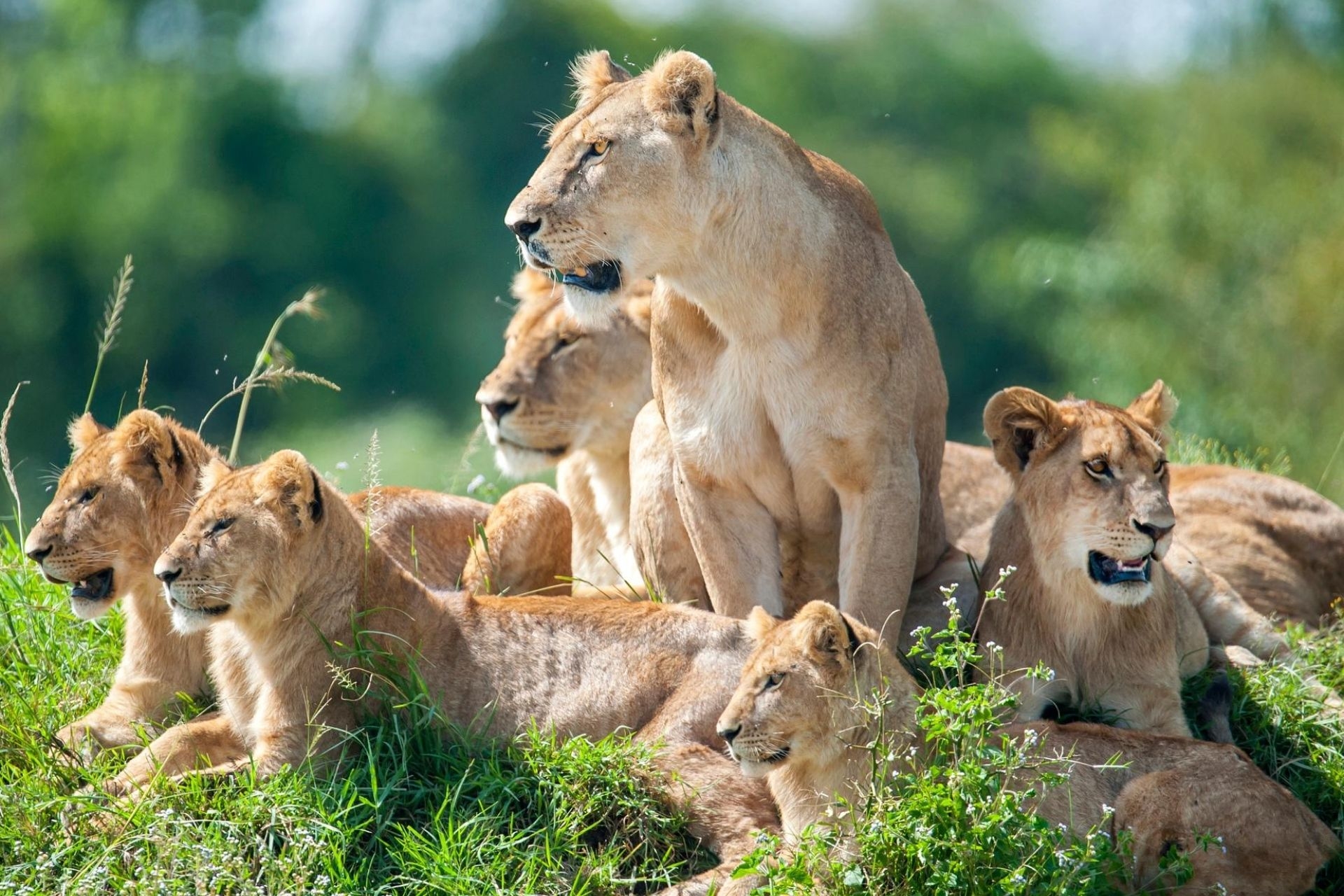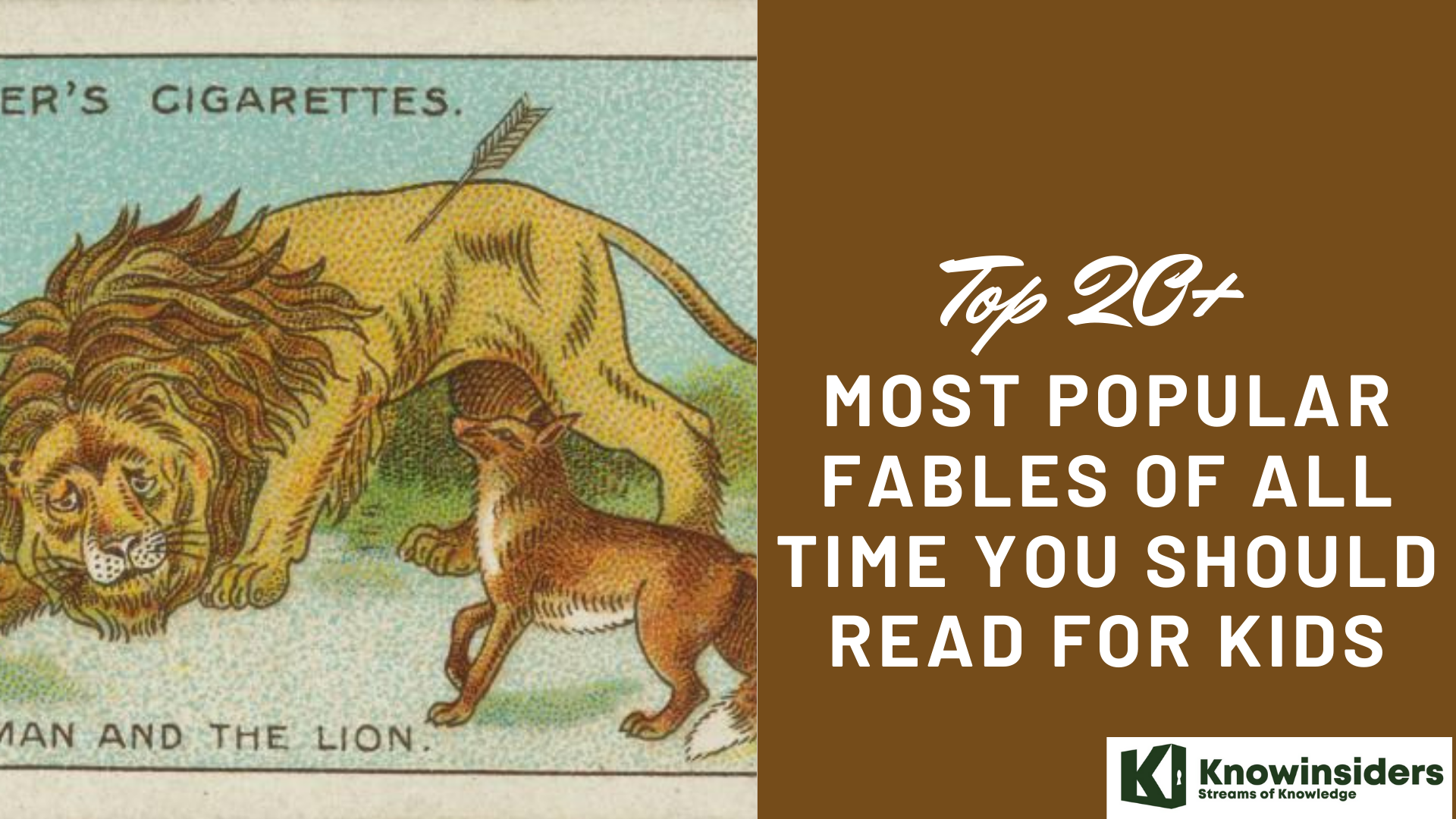10 Best Life Lessons We Can Learn From Animals
 |
| 10 Best Life Lessons We Can Learn From Animals |
| Table of Content |
How often do you interact with animals in your daily life? Not just your dogs or cats, but a myriad of wildlife? Chances are, not very often. While surely, we’d all like to spend our days surrounded by animals, this is hardly the reality for most people. As a society, humans have separated ourselves from the animal world, building houses and fences to keep wildlife away.
Simply put, if you have a pet animal, such as cat, dog, parrot, etc., in your home, you might have observed certain traits in them that carry various lessons for us which are highlighted in this write up. Adopting and practicing those qualities in our daily life, it would certainly add up to our personality grooming.
Here are some of the traits and characteristics that some birds, animals and insects have which provide an opportunity of learning to all of us.
10 Best Life Lessons We Can Learn From Animals
1. Presence
Animals have no worries relating to either the past or the future; for animals, it is all about living in the now. Whilst we cannot and should not forget about our pasts or our futures, learning to be fully in the present, as our pets are, can prove extremely powerful for improving our spiritual well-being.
Your dog will savor even the simplest of moments, so, do the same! Instead of dreaming ahead to when you will be leaving work or going on holiday, bring yourself back to the present and learn to appreciate what is already in front of you.
It may be something as simple as the cup of tea you're currently drinking.
Let your beloved pooch help you to feel better at home in the present.
Turn off your phone, shut down your laptop, and enjoy taking your dog for a walk or even watching your pet as it plays and rests.
2. Teamwork
 |
| Photo: timeforkids |
Learning how to work with others isn’t just a trait your employers will find critical on your resume. It’s an important life skill that helps us become more empathic, compassionate, and altruistic. It also facilitates good communication and problem-solving skills. The most successful hunters in the animal kingdom are African wild dogs. Why? Teamwork.
They track their prey in formation, rest when they’re tired, and work together to bring down, and then share, their next meal. Brutal, but effective. Wild dogs are also adept at communication, talking to each other through a series of high-pitched barks throughout the stalking process. Because they work together, rather than apart, they definitely achieve more.
3. Trust
A dog or cat will never question their master, their trust is truly boundless.
Show the same trust in the universe that your pet shows in you, and your life can be improved for the better. You are the creator of your reality, but to give you confidence in your role as creator of your life, you need to trust that the universe is working in your favor.
Having the kind of trust that your pet has is rare and takes time to develop, but learn to trust in yourself and in others and your world can begin to immediately transform for the better.
4. Patience
Standing in line can be infuriating. But, let’s be honest, you’re probably made to wait for, what? 15 minutes? Imagine having to wait for hours! A leopard’s ability to be composed during a hunt is impressive. The lead-up to the final ambush can take the entire night!
Leopards stalk with steady precision, slowly pacing with paws down so as to not make any sound. Then, when the time is perfect, they propel fiercely forward and nab their prey. In a world where we get impatient because logging into our PCs takes a whopping six seconds, we could probably learn to not let it get to us so much.
5. Play Fair
Playing fair is a skill that we’re taught when we’re young and includes learning how to share and take turns. These skills are the building blocks of positive human interaction and remind us to consider others - even when we are having fun. Canids, which include wolves, jackals, foxes and domestic dogs, have a distinct code of play that embodies playing by the rules, clear communication, apologizing when necessary and being sincere.
Be mindful of how you interact with others and how inclined you are to share and wait your turn. Take your cue from these kids who were part of a social experiment in Spain, which shows how important sharing and giving is at all ages.
6. Smile no matter what
 |
| Photo: knowyourmeme |
In Australia, you can find a tiny, cute animal called a Quokka scurrying through the trees…and stopping to take selfies with humans if they’re not too busy. Recently, people have been posting their pictures with this amiable, cheerful creature, and the first thing you will notice about them is their infectious smile. They seem to live out their days without a worry in the world and keep a positive attitude through it all.
So, even if you’ve had a bad day, think of how the Quokka would handle it, and you will instantly break out in smiles.
7. Be watchful and focused
Many birds and animals are very watchful and good observers like monkeys, crows, dolphins, eagles, kites, etc. They are very curious but cautious too, so they scan situations and act accordingly, moving closer or away, as the situation demands.
Eagles and kites have very sharp vision which allows them to find their prey on ground even when they are soaring high in the sky. They are also able to avoid danger through this quality of theirs.
From them we can learn the lesson of being watchful in our daily life. It is essential to develop the habit of watchfulness and observation as early in life as one can. Observation sharpens the memory and helps us remember places, people and other things in our daily life, which also will help us avoid dangers. Observation helps in learning too.
Animals like lion, cheetah and crocodile, etc., are display remarkable concentration by focussing their eyes on their target/prey. It is their concentration which helps them get their target easily. These animals teach us to stay focus on our target even when there are many distractions around, because focus is the key to success.
8. Listen more, talk less
Dolphins actually communicate with one another via high-pitched whistling noises, and each one makes a distinctive sound that other dolphins can immediately recognize. They have very advanced communication techniques that rival our own, in some ways, and must listen in order to understand each other’s location in the vast ocean. If they all whistled at once, none of them would be able to find one another – they have honed their listening skills in order to function best as a group.
Humans can especially learn from dolphins that listening to another person, rather than always needing to talk, can actually benefit relationships much more in the long run.
9. Maintain order and discipline
Most birds, animals and insects maintain order and discipline in some way. Ducks and geese form a “V” shape formation, called Skein, while flying in the sky. If you notice, there is one leader bird ahead of all and the rest following him in perfect order, especially during migration.
Similarly, honey bees and ants display order and discipline by working jointly in an organised manner, which helps them get their work done easily, collectively and efficiently. Their strength and success lies in unity and teamwork. Moreover, lions and wolves have a leader and the rest in their ‘pride’ and ‘pack’ follow the leader and maintain order and discipline, which add to their strength.
This all gives us a lesson about the importance of maintaining order and discipline by obeying rules wherever we are, be it home, work place, school and public places. This quality binds the members of a group together. This is one of the most important lessons that we must practice in our daily life to avoid disorder and failure.
10. Practice forgiveness
Unfortunately, elephants often fall victim to poaching or other violence inflicted by humans, and they usually lose family members in the process. Elephants possess great intelligence and feel complex emotions just like we do. Many organizations take in orphaned elephants who have watched family members die or get injured at the hands of humans, yet these elephants allow their new caretakers to rear them anyway. Elephants can teach us to forgive in any situation, even if we can’t always understand the other person’s actions.
What things are inspired by animals?SharksIn the US Navy, ships and submarines experience fouling (the accumulation of unwanted material on solid surfaces, in this case algae and barnacles), which reduces efficiency. When Dr. Anthony Brennan was hired to develop antifouling technologies, Brennan observed that sharks were the only marine animals that don’t foul (meaning they stay clean). This was because shark skin is comprised of denticles that overlap in a diamond shape repeating pattern that inhibits bacteria from growing. Brennan and his team realized they could mimic shark skin and create surfaces that prevent bacteria not only on ships and submarines but on medical devices as well. Today, Sharklet Technologies develops medical devices and consumer applications utilizing the Sharklet pattern. TermitesWith rising temperatures and expensive air conditioning prices, Zimbabwean architect Mick Pearce was tasked to design the largest commercial building in Zimbabwe with a natural cooling system. After noticing termite mounds, Pearce realized he could mimic the insect’s structure because termite mounds drive natural ventilation through a system of air pockets. “Chimneys” at the top of the termite mounds circulate hot air while cool air stays at the bottom. Today, the Eastgate Centre in Harare, Zimbabwe only uses 10% as much energy as conventional air-conditioning. KingfisherWhen Japan’s Shinkansen bullet train received noise complaints from residential areas, an engineering team was tasked with designing a train that was quieter and more efficient. Eiji Nakatsu, the Director of Technical Development (who was an avid bird-watcher), drew inspiration from the Kingfisher. The Kingfisher is a bird that hunts its prey by diving into water while barely making a splash. They’re able to do so quietly because of the shape of their beak. Nakatsu took the design of the Kingfisher’s beak and applied it to the bullet train. As a result, the new train was 10% faster, used 15% less electricity, and stayed under the 70dB noise limit in residential areas. |
 How to Learn to Accept Things and Let Go for Happiness - Life Lesson How to Learn to Accept Things and Let Go for Happiness - Life Lesson Life Lesson - Being active is a good thing but sometimes in life you also need to learn to accept things and let go. One ... |
 Where Does the Worst Suffering in Human Life Come From - Life Lesson Where Does the Worst Suffering in Human Life Come From - Life Lesson In daily life, sometimes when we sit alone to meditate, we often wonder: "Where does the greatest suffering in human life come from?" - Life ... |
 Top 20+ Most Popular Fables and Lesson of All Time You Should Read For Kids Top 20+ Most Popular Fables and Lesson of All Time You Should Read For Kids If your kids are not fond of long, complicated stories, fables are perfect for some bedtime tales, and important morals that they can learn from ... |


























